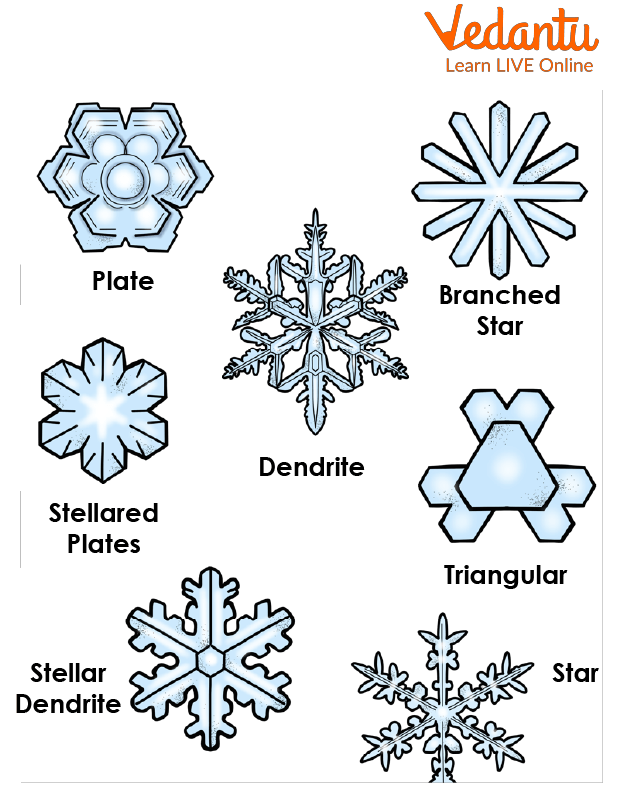




Snow Around The World
We have all heard the word snow before, and the first thing which comes to our mind when we first hear the word snow is the colour white and the coldness that the snow carries. We can actually technically define snow. In this article we aim to do just that and also provide some more information about snow.
The small, soft, white crystal-like pieces which fall from the sky during winter seasons or the tiny, soft chunks of ice that cover the ground and other surfaces are known as snow. About 27% of the earth’s surface is covered by snow. Snow is composed of water, just like rain but ice will make it appear like crystals.
Formation of Snow
Water vapour, or water in the form of a gas, condenses into snow high in the clouds. The water vapour in a cloud can freeze to create ice crystals if it is cold enough. About 40 °F (0 °C) to 32 °F (0 °C) is the range at which water vapour crystallises around dust particles in the cloud. When it is colder, water vapour instantly turns into ice crystals.
What are Snow and Snowflakes?
Depending on the structure of ice crystals, most snowflakes have six sides. A snowflake's shape is affected by its environment as well. When cloud water droplets freeze, they produce ice crystals. The surrounding air's temperature and humidity have an impact on the shape of the ice crystal.

Falling Snowflakes
Types of Snowflakes
Each snowflake has a different pattern due to the way the ice crystals connect. The majority of snowflakes, however, have six points or six sides. They form seven common shapes.

Types of Snowflakes
Branched star
Triangular
Dendrites (having branches)
Plates
Stellar plates
Stellar dendrite
Star
The temperature and the amount of moisture in the cloud determine the shape that a snowflake will take.
Effects of Snow
Snow can disrupt communication.
It can be extremely dangerous to pedestrians.
Bridges and overpasses are particularly dangerous due to snow.
It can damage trees.
Snow Around the World
Snow falls in many places that get cold weather, mainly during winter. At the North and South Poles, snow covers the earth year-round. Near the Equator, snow falls only in the highest mountain regions. Some of the snow-falling areas are Japan's mountains (the world’s snowiest region), California, Europe, Austria, and belgium.
Facts about Snow
Snow cannot form without fungal spores or dust in the atmosphere.
A very cold water droplet freezing onto a pollen or dust particle in the atmosphere is the initial stage in the production of a snowflake. As a result, an ice crystal forms.
A snowflake takes around an hour to reach the earth.
The majority of snowflakes fall at speeds between 1 and 4 mph, according to the United Kingdom's Met Office, though this varies depending on the size, mass, and climatic circumstances of each snowflake.
Snow is translucent. In reality, snow is colourless, just like the ice crystals it is composed of. Since it is translucent, light is reflected rather than easily passing through it like it would transparent glass. A snowflake appears white because of the light that bounces off its faceted surface.
Snow blindness is a disorder brought on by snow's capacity to reflect UV rays. The shiny qualities of the snow burn the cornea (clear cover of your eye).
Solved Questions
1. What are those small white crystal-like structures falling from the sky called?
Crystal
Snow
Ice
Ans: b) Snow
2. In how many shapes can snowflakes be found?
7
6
8
Ans: a) 7
3. Which place in the world experiences the maximum amount of snow?
Japan’s mountain
USA
Africa
Ans: a) Japan’s mountain
4. How many ice crystals can be found in a snowflake?
1000
100
50
Ans: b) 100
Summary
Climate, as well as plant, animal, and human life, are significantly impacted by snow. It creates a cold climate by increasing solar radiation reflection and limiting heat transfer from the ground. On the other hand, snow can also be harmful. Therefore, knowledge about snow is essential before admiring its beauty.
FAQs on How is Snow Formed?
1. What is snow?
Snow comprises small and soft, white crystal-like pieces which fall from the sky during winter season and cover the ground.
2. What are snowflakes?
Ice crystals which have 6 symmetries are known as snowflakes. Several crystals will join to make a single snowflake.
3. Name the different types of snowflakes.
Branched star, triangular, dendrites (having branches), plates, stellar plates, stellar dendrite, star are the various types of snowflakes.
4. How much time does a snowflake take to reach the earth?
A snowflake may take around an hour to reach the earth.
5. How many sides does a snowflake have?
Most of the snowflakes will have 6 sides.









